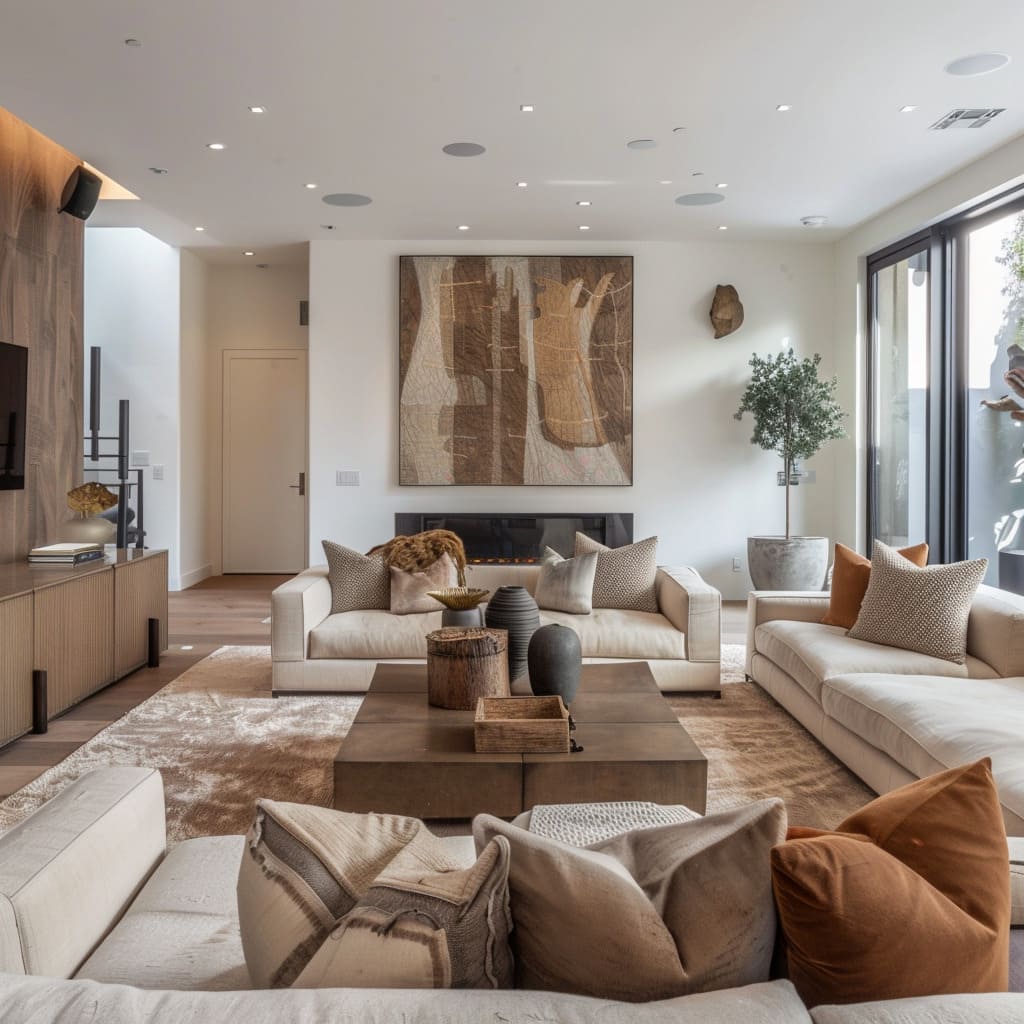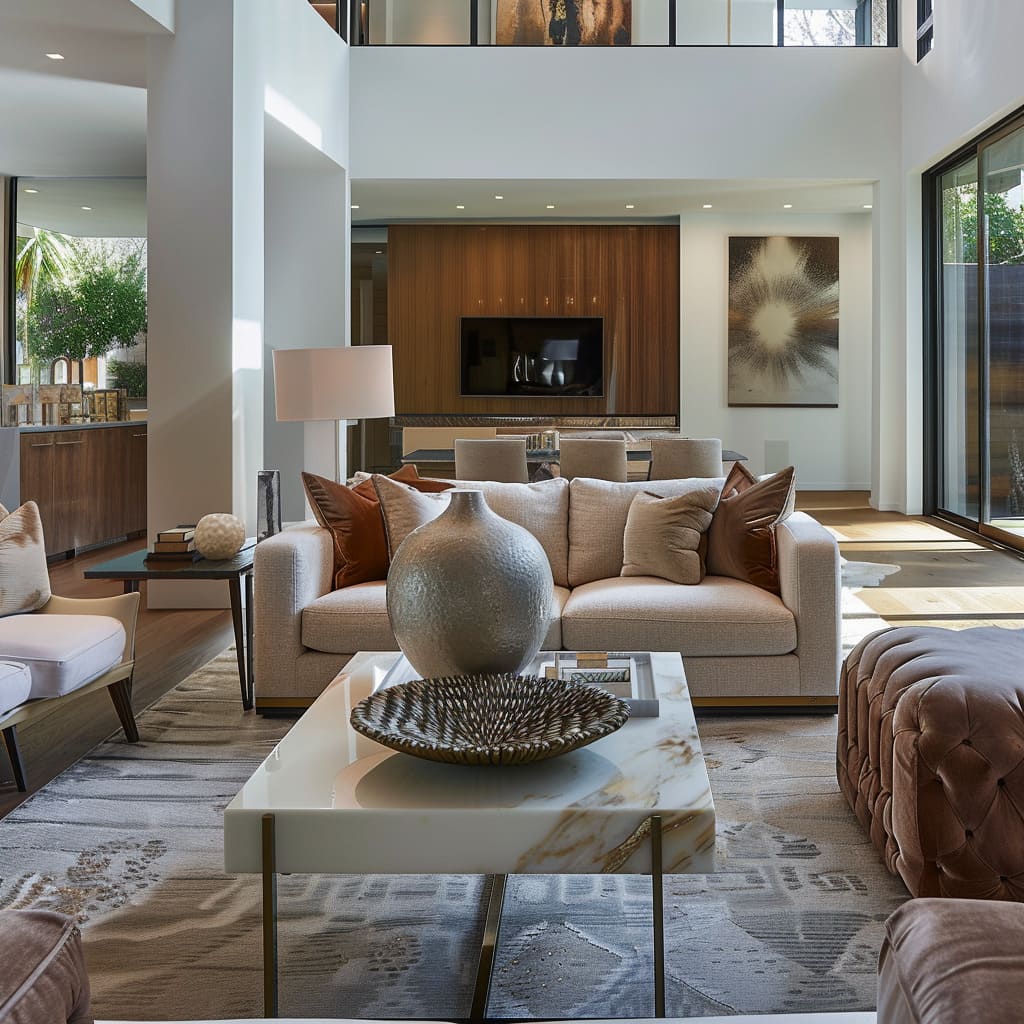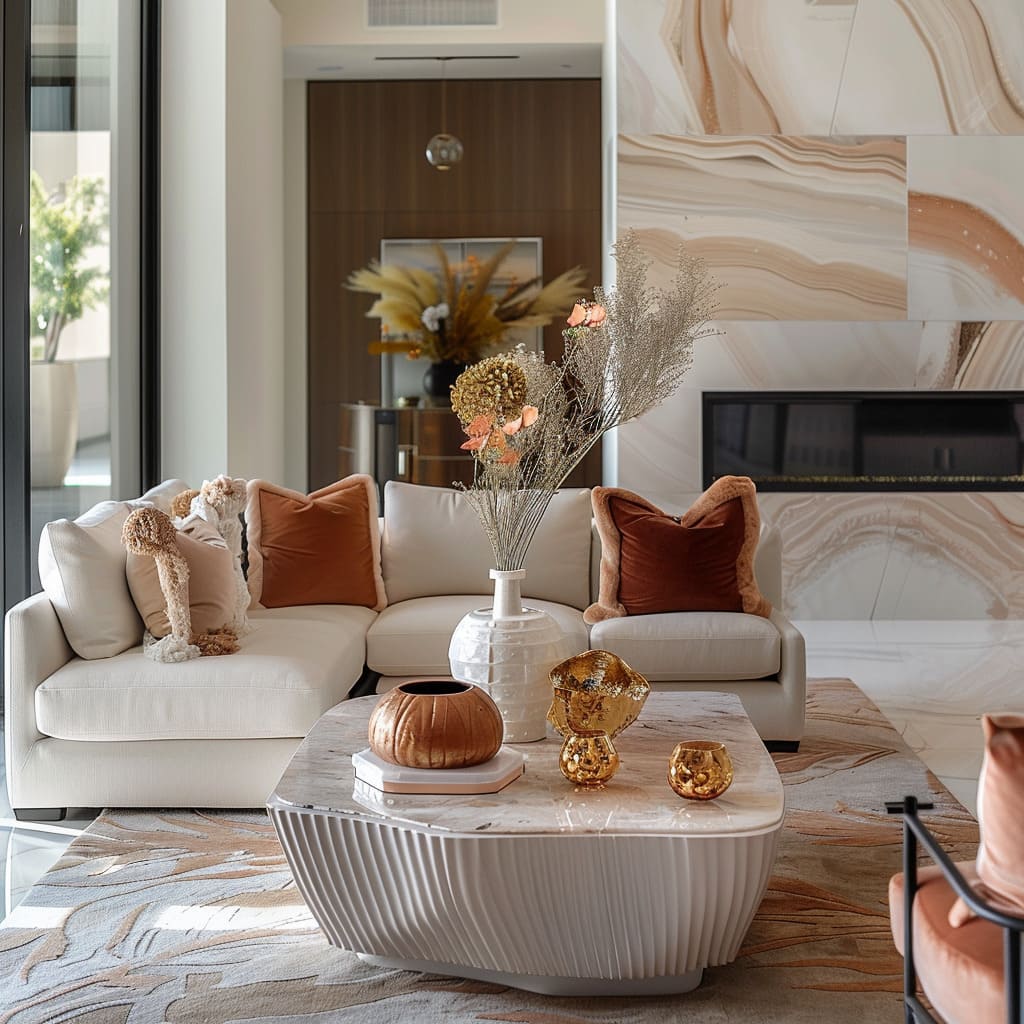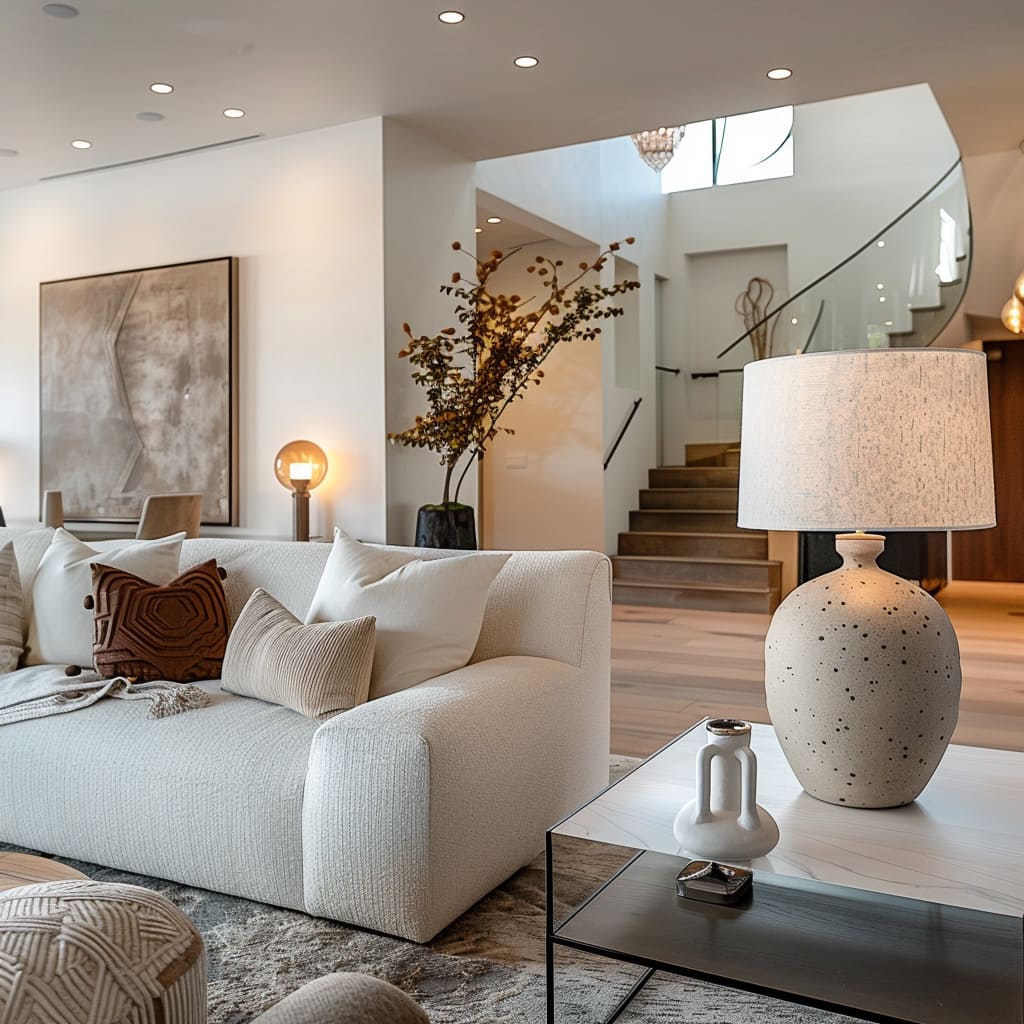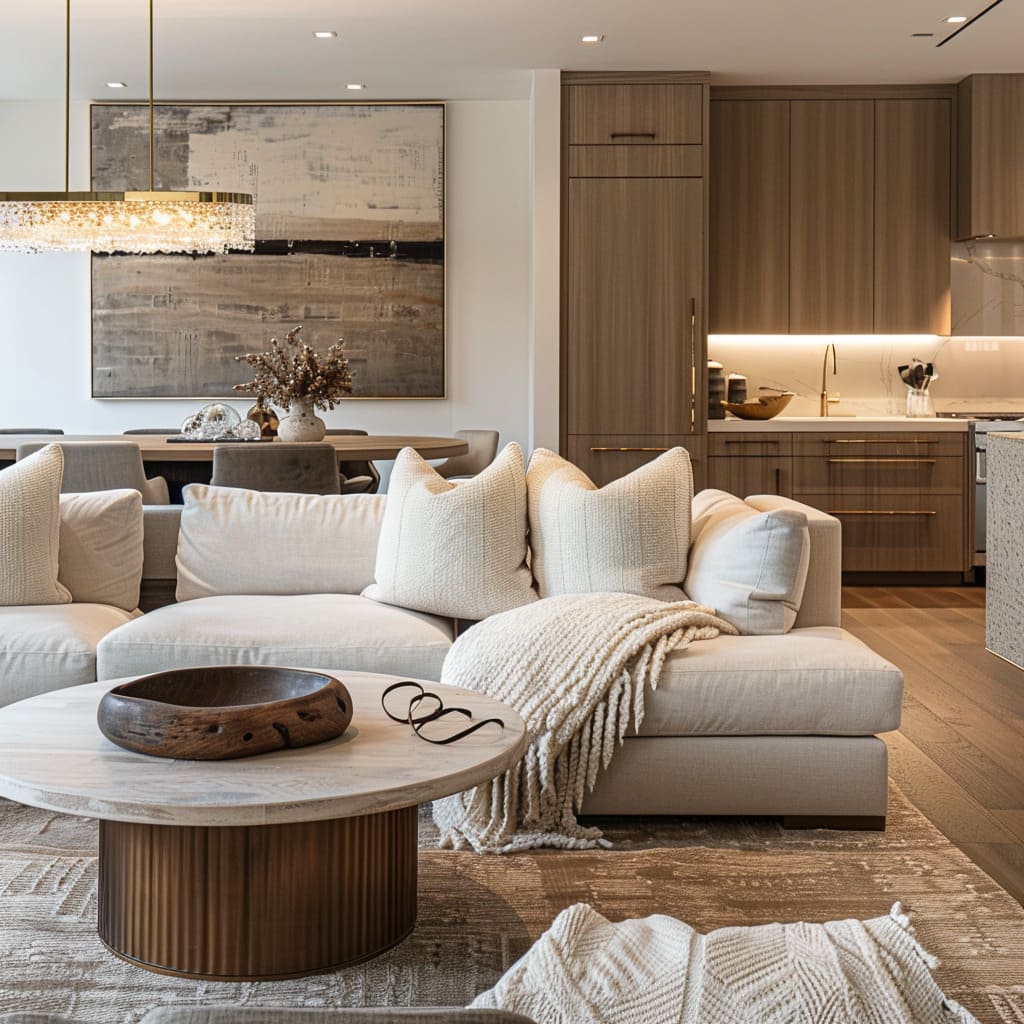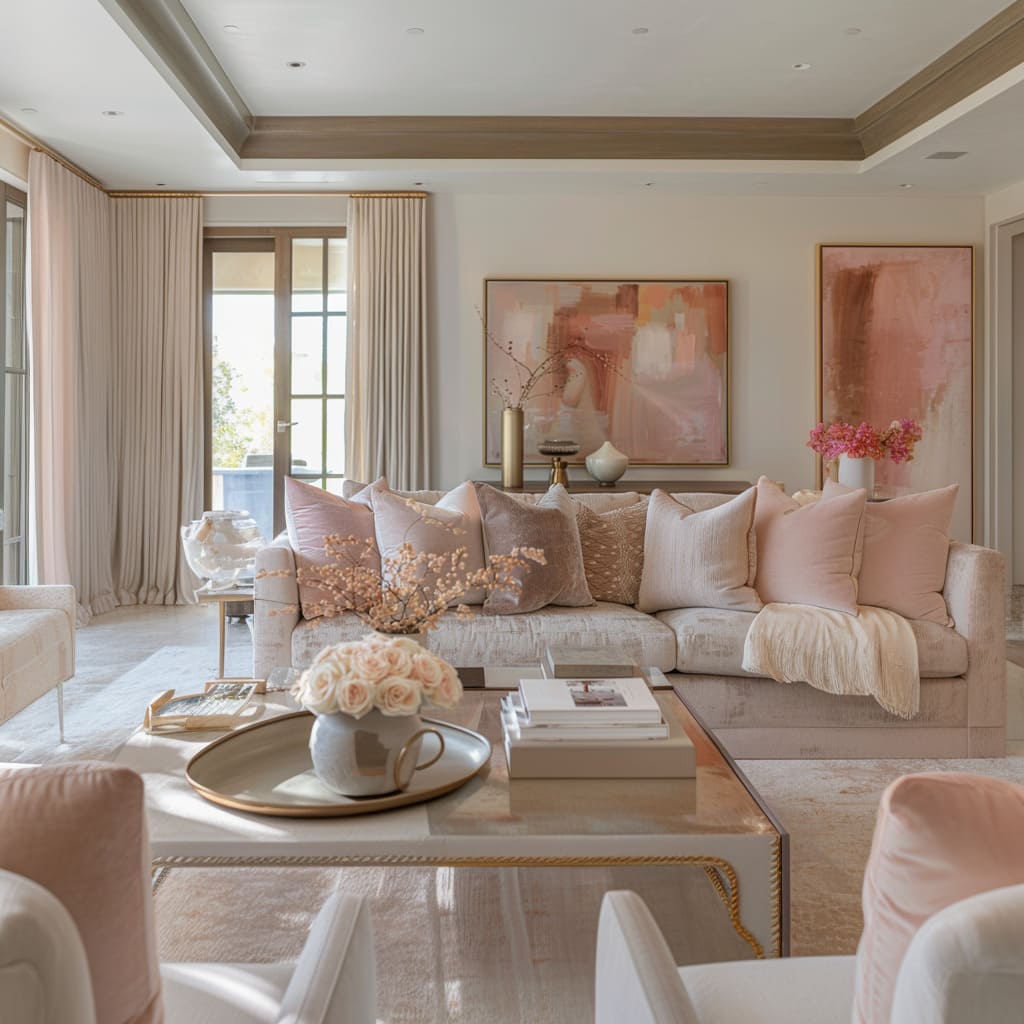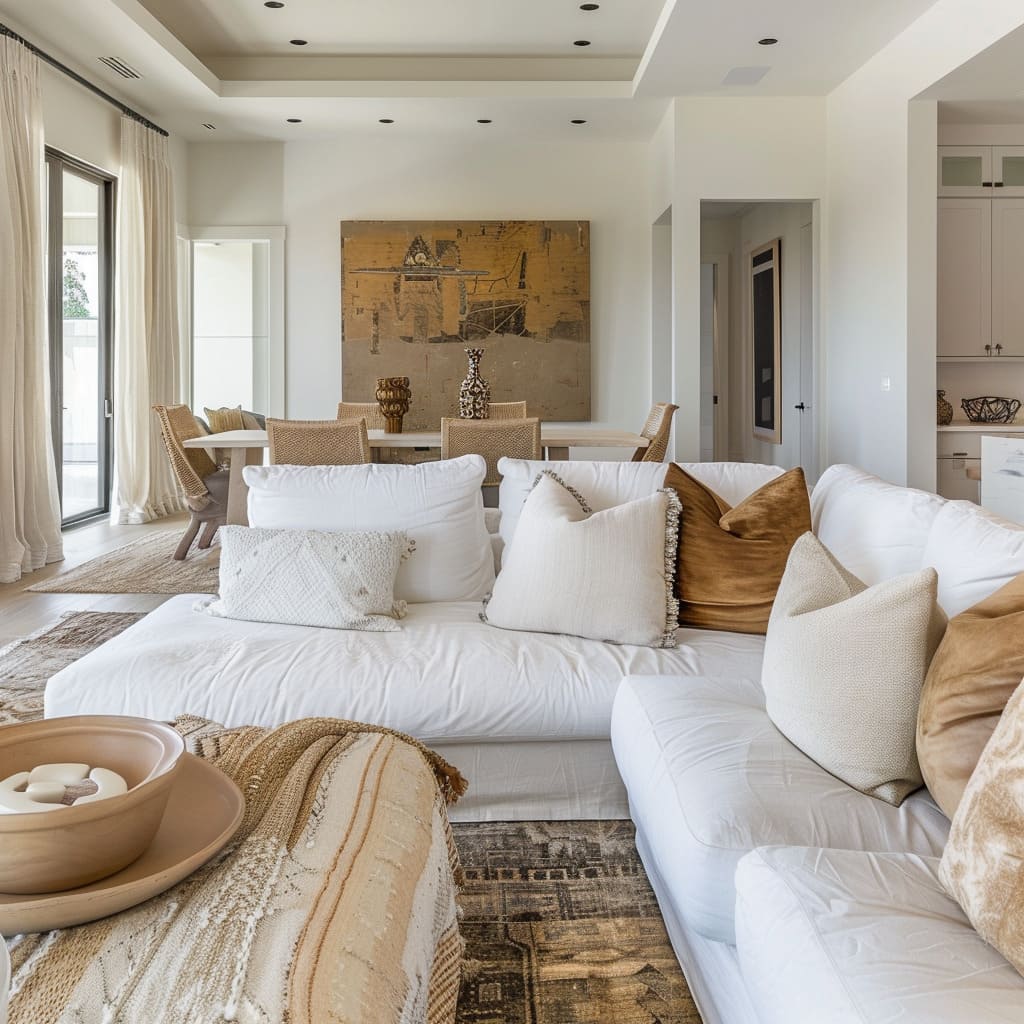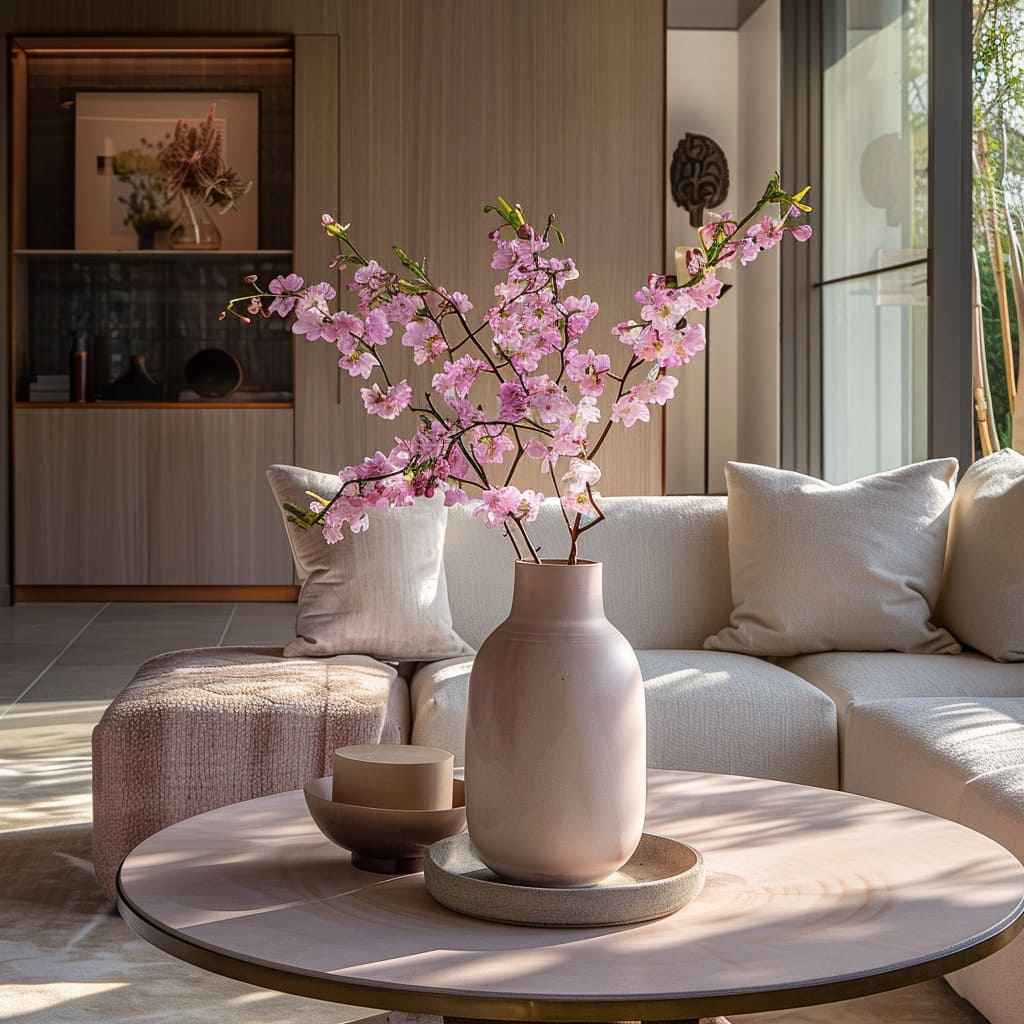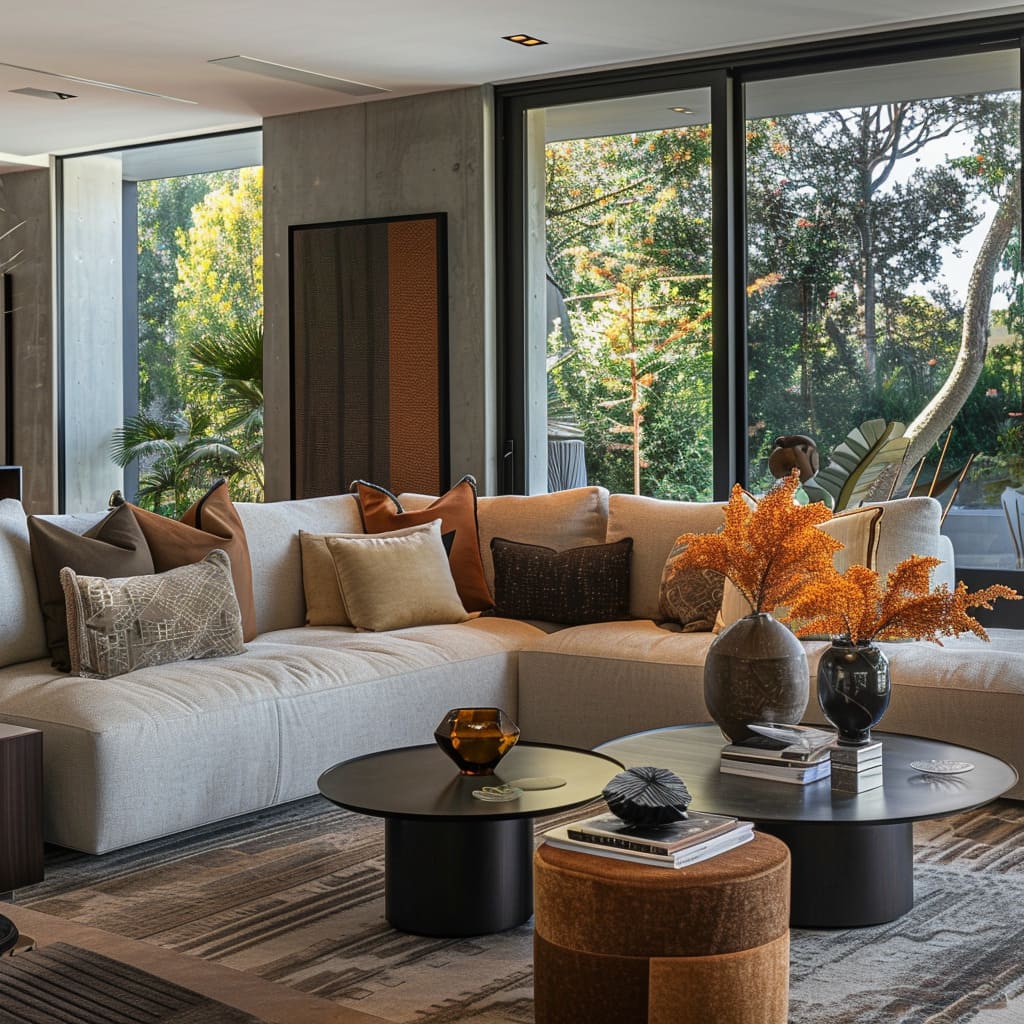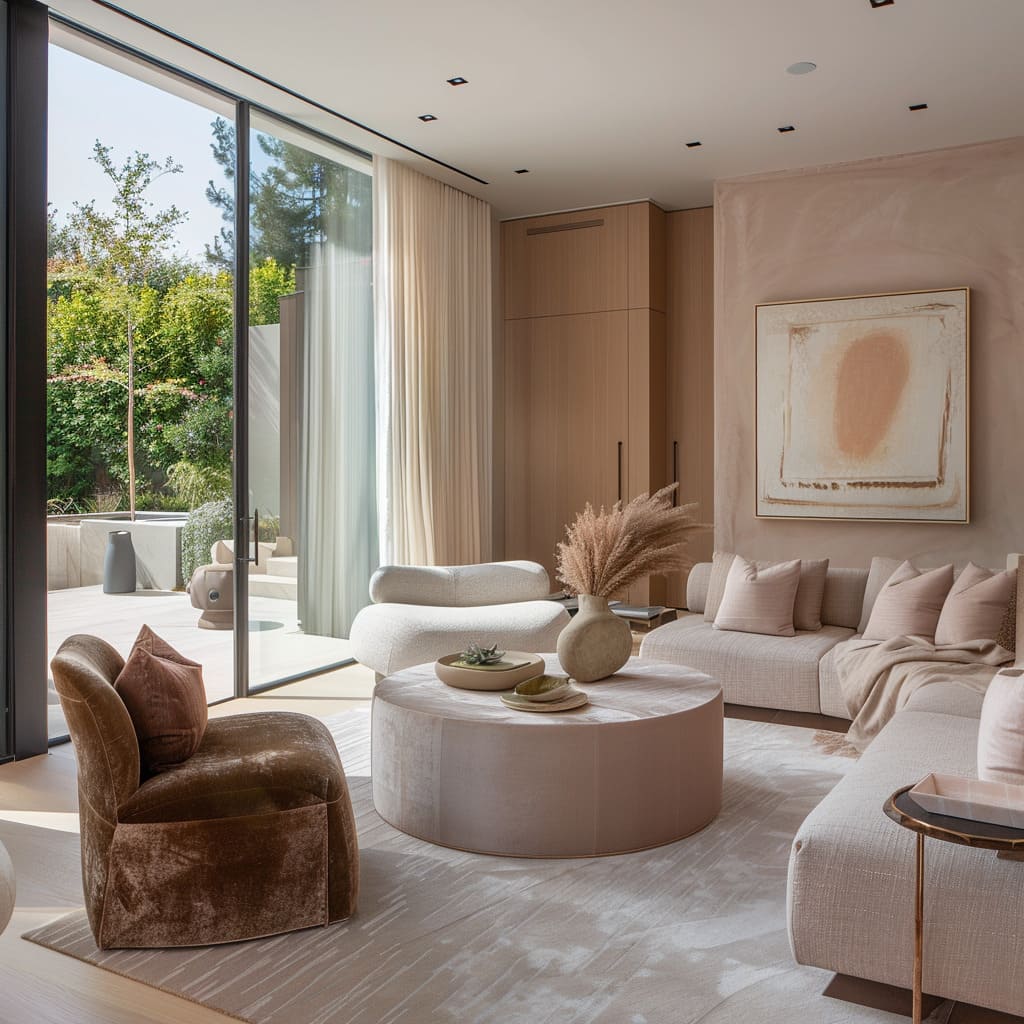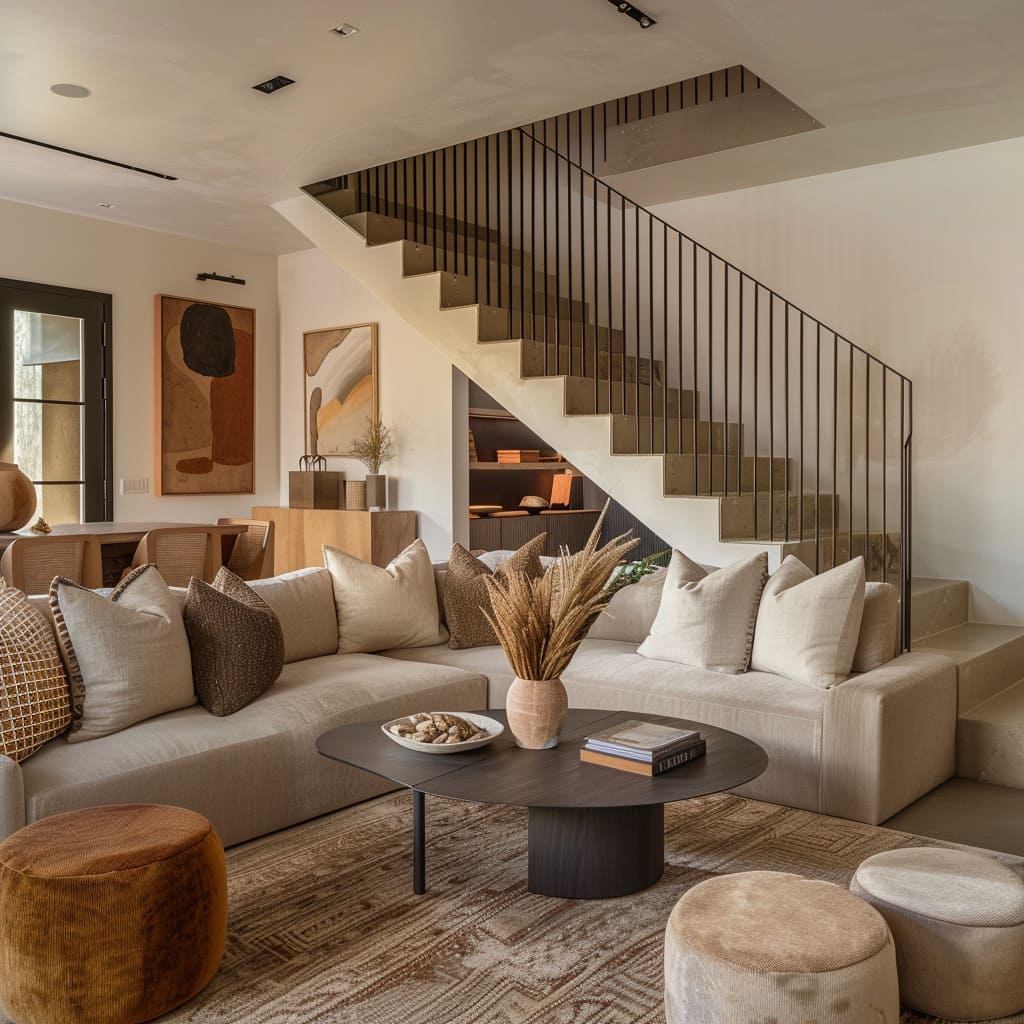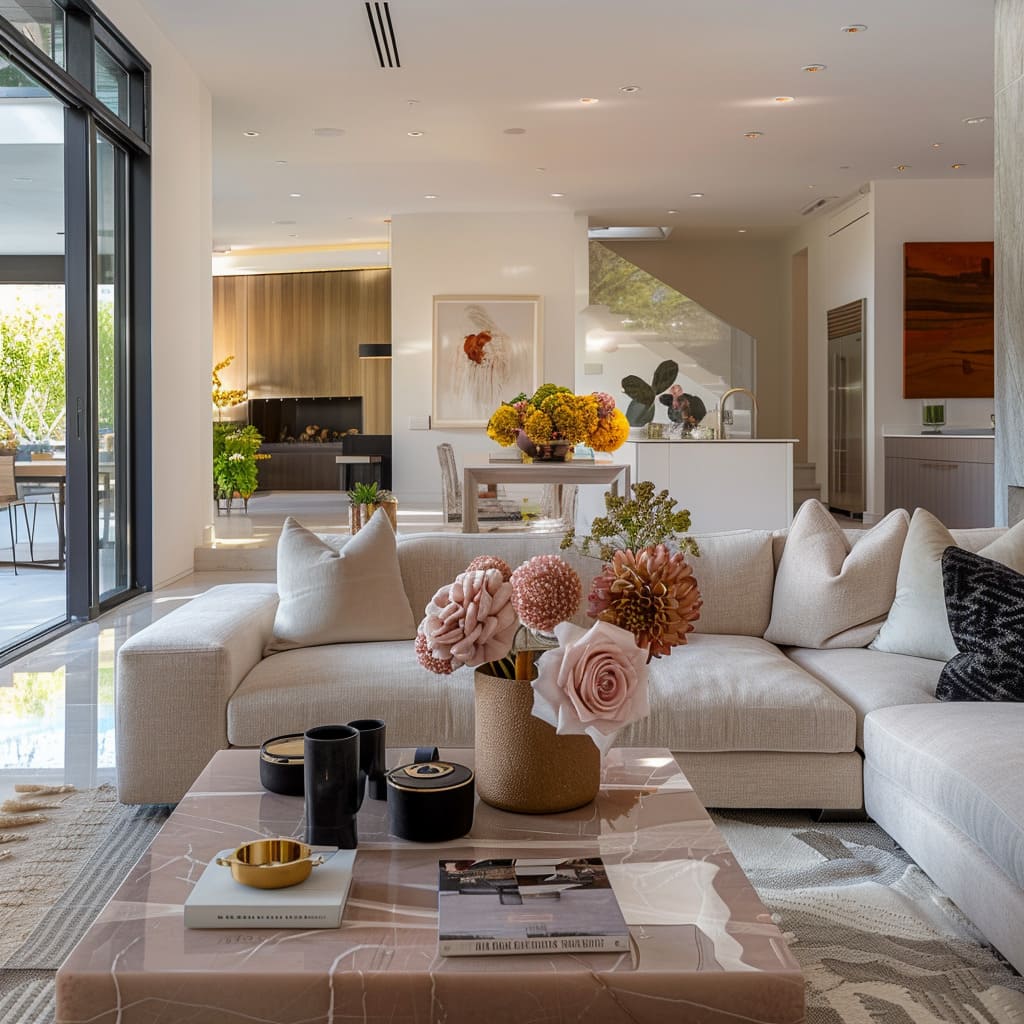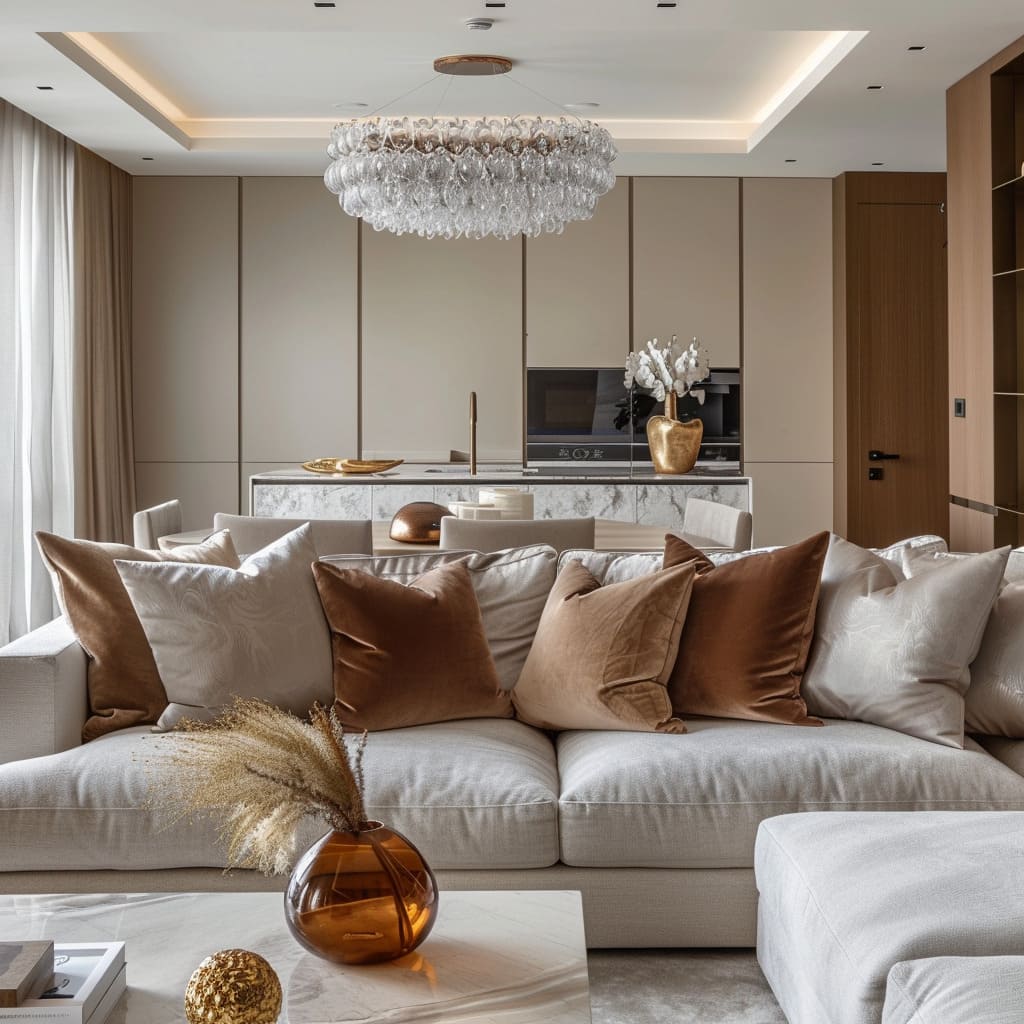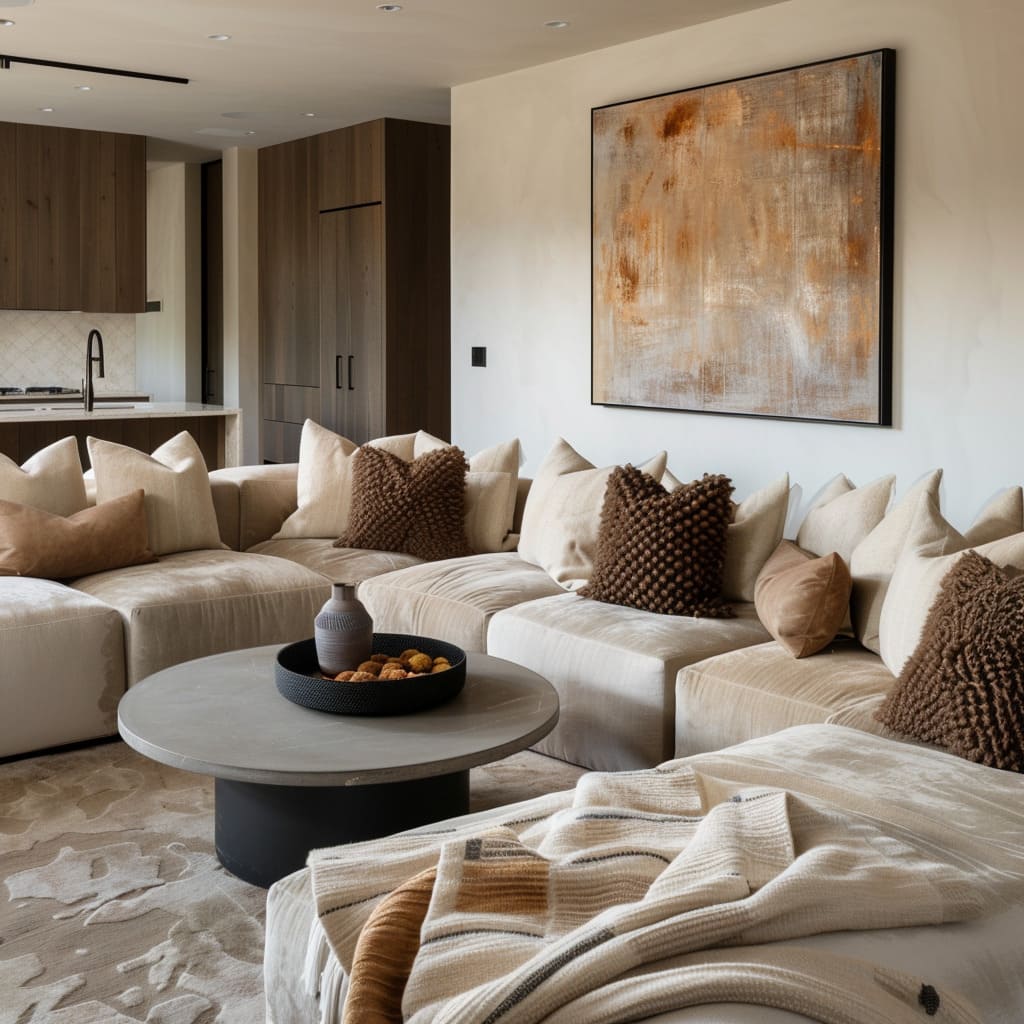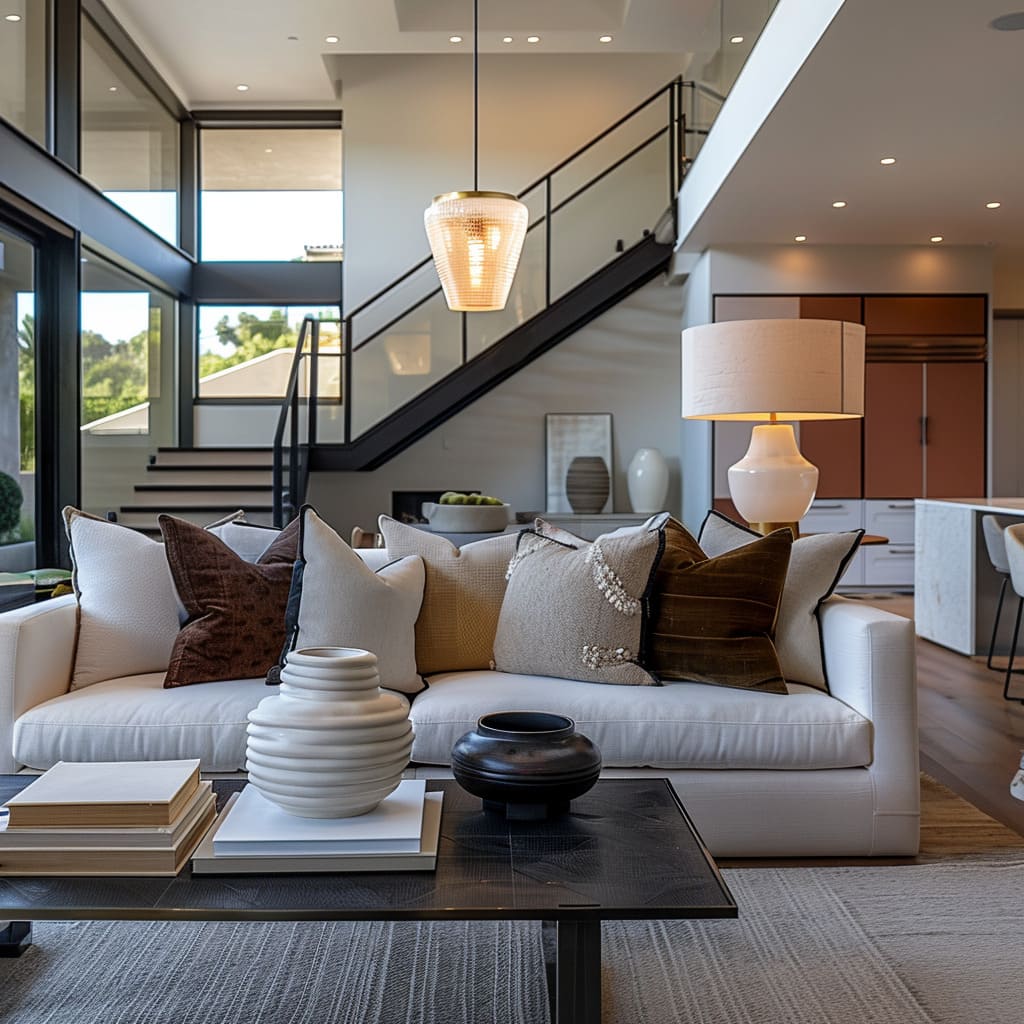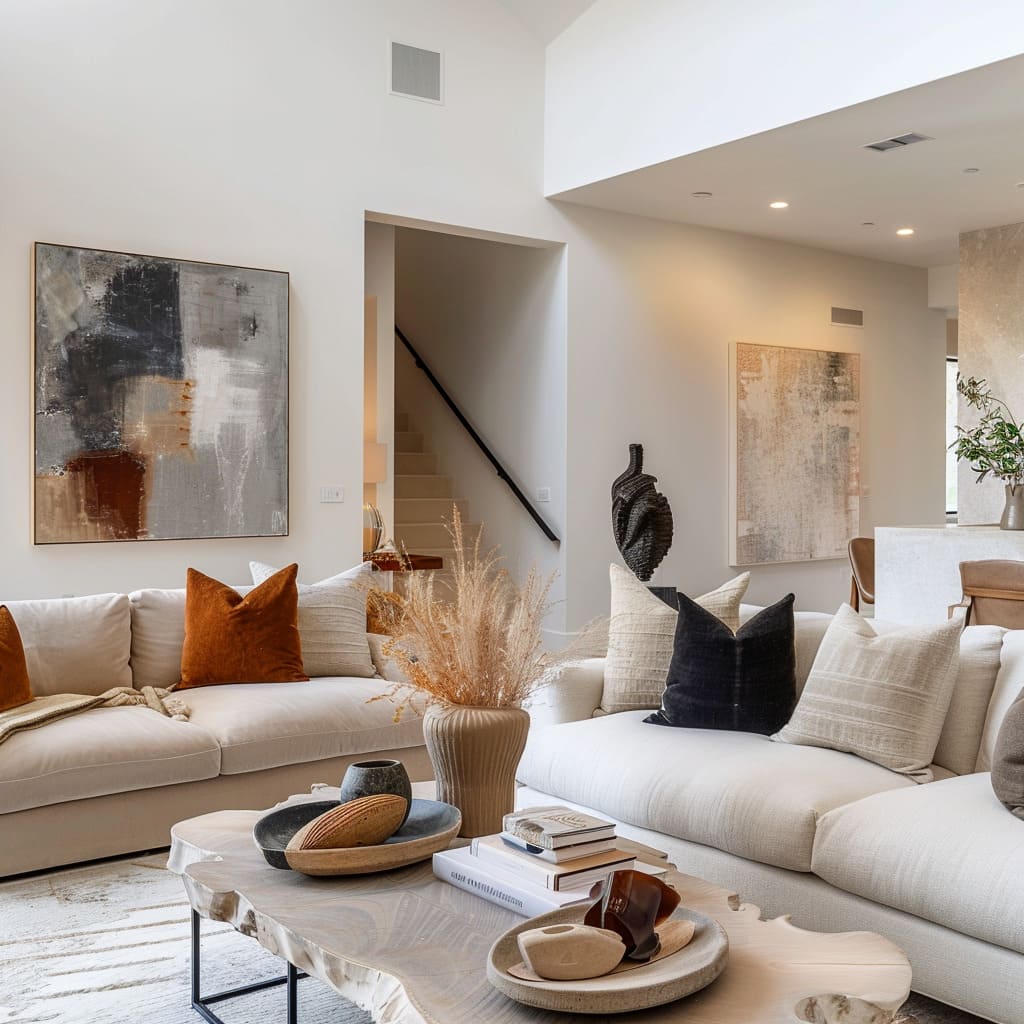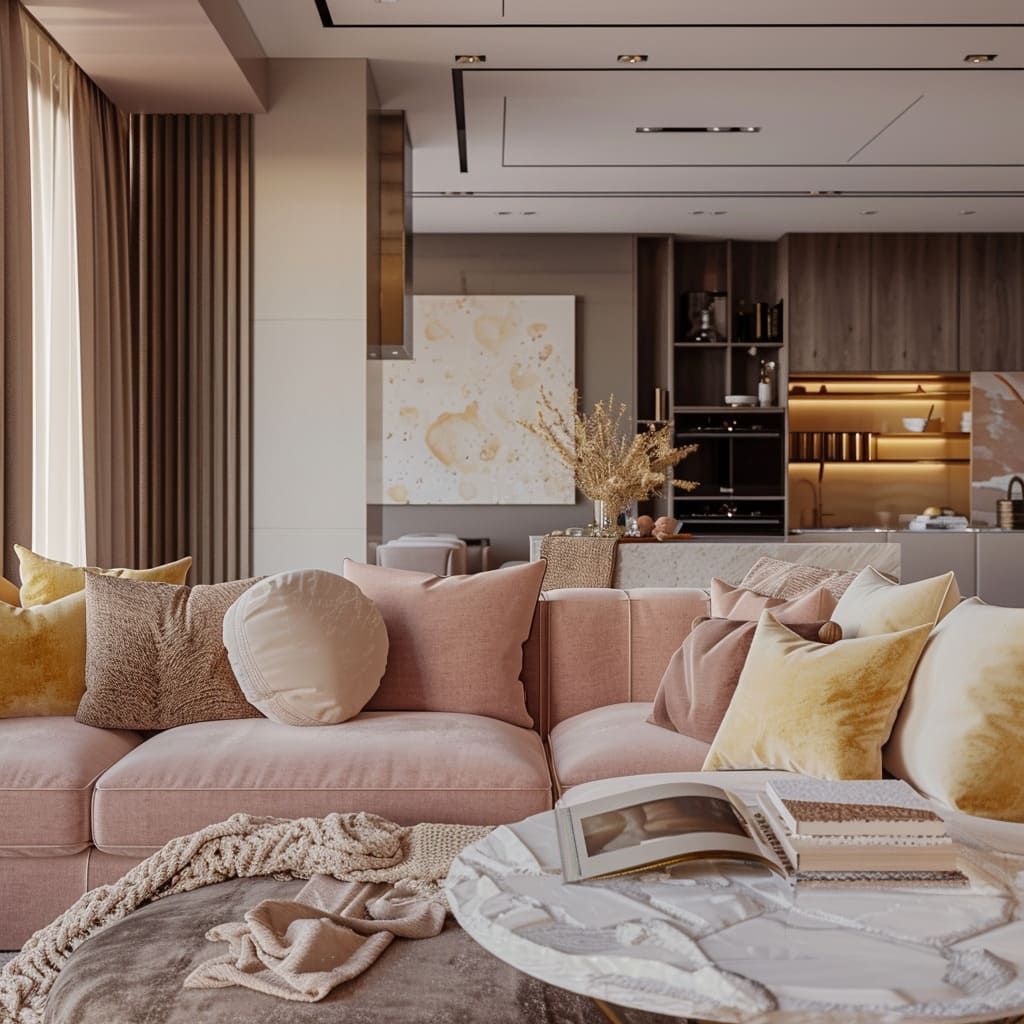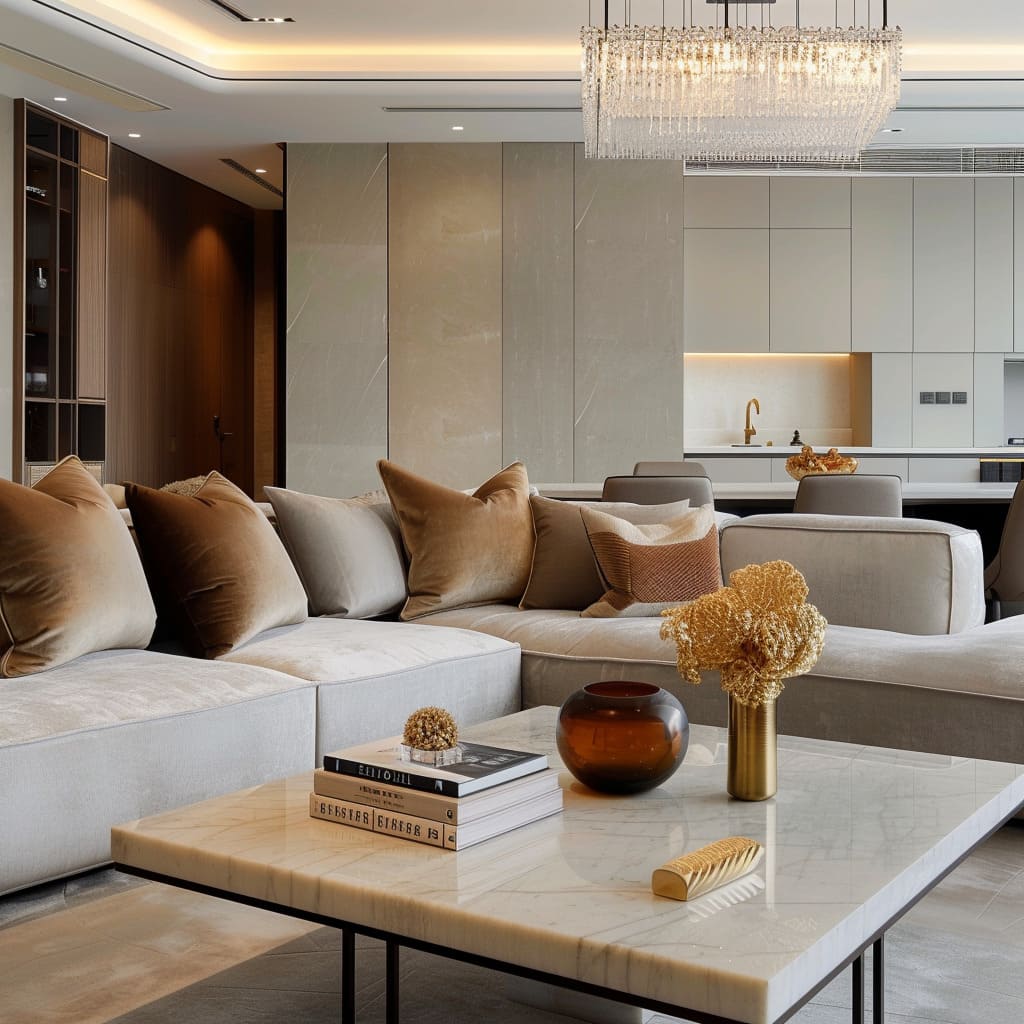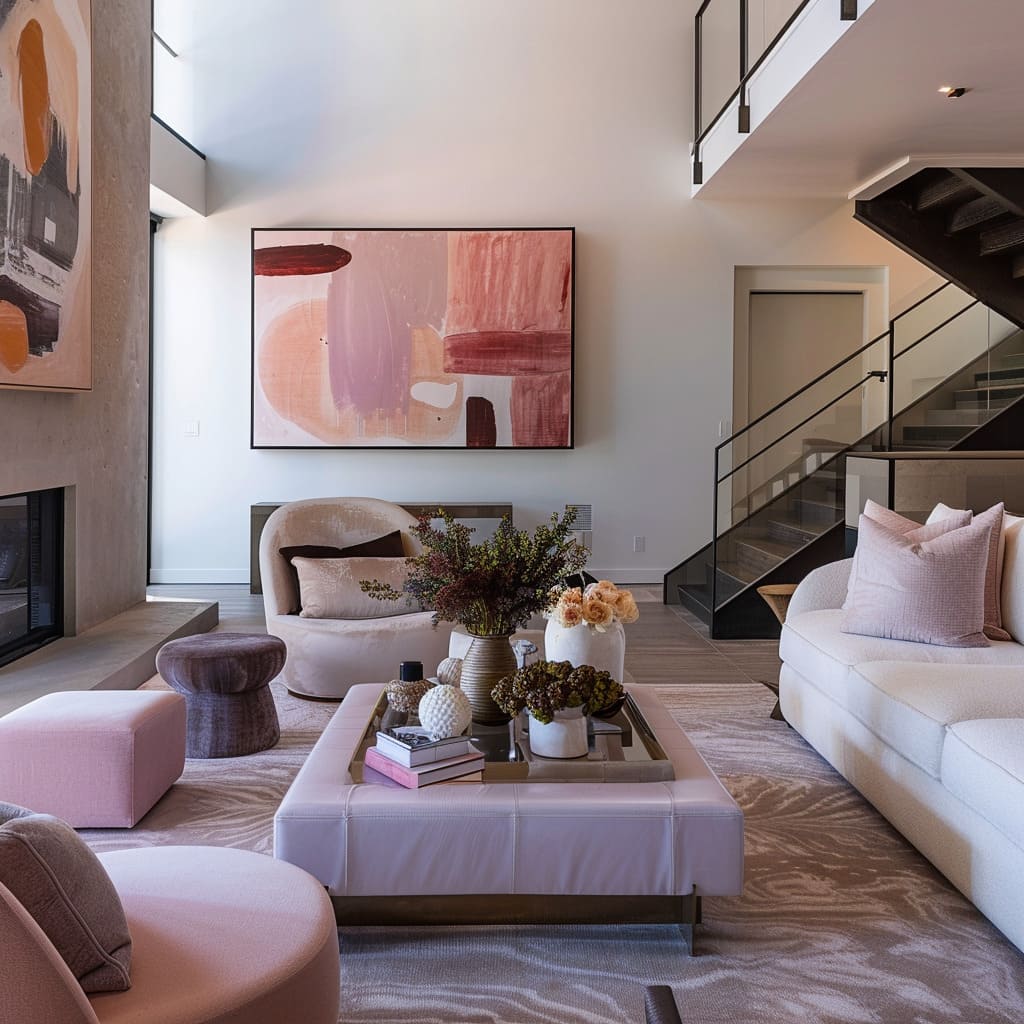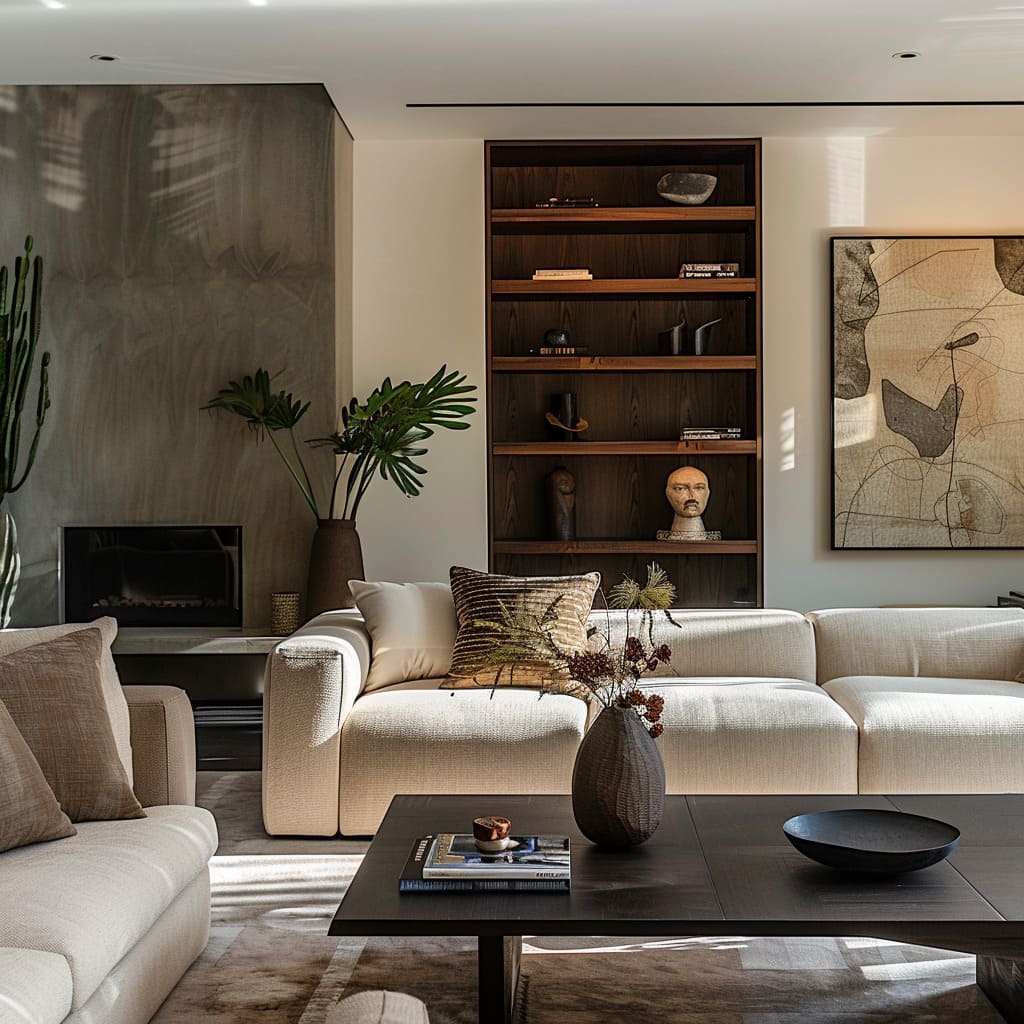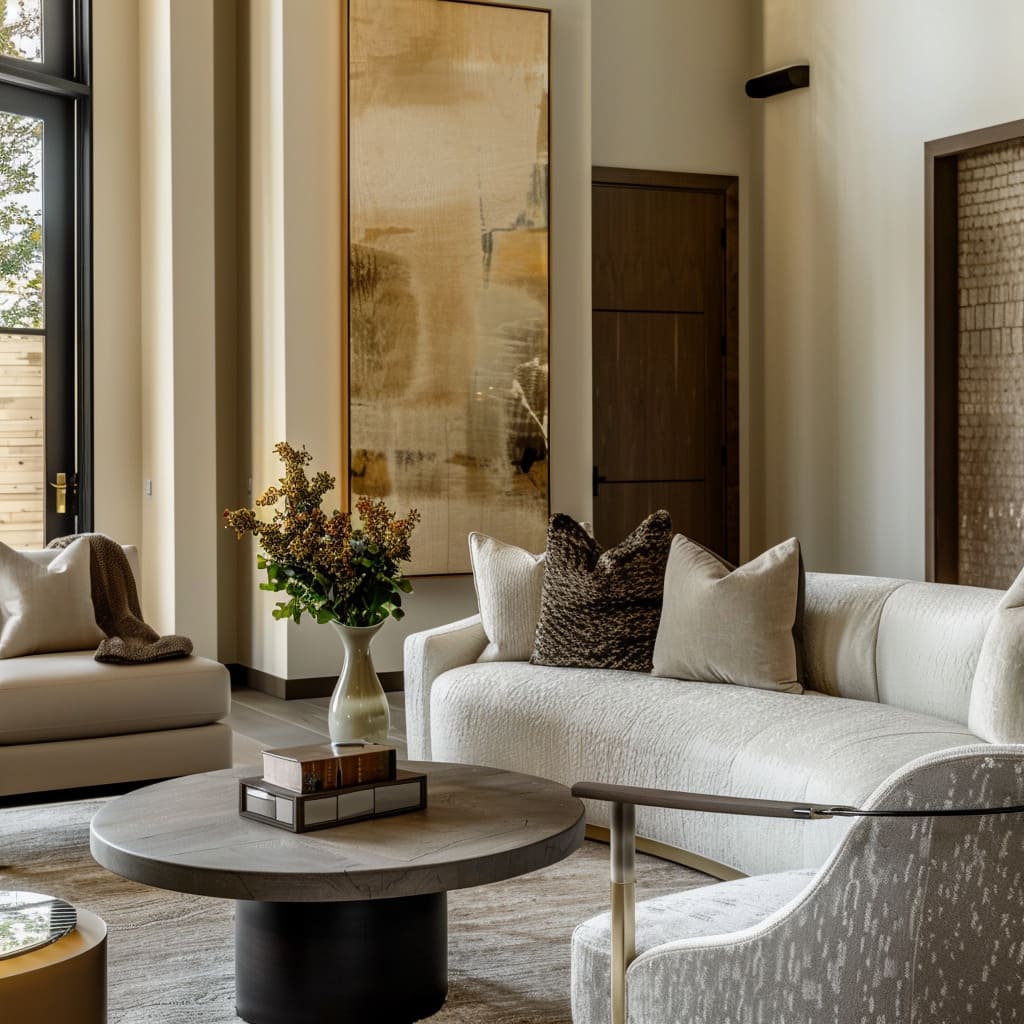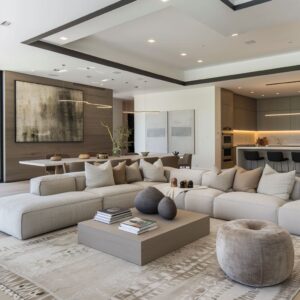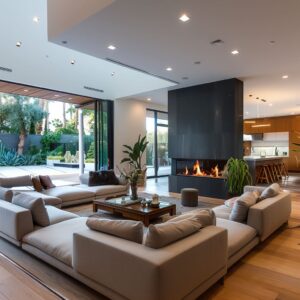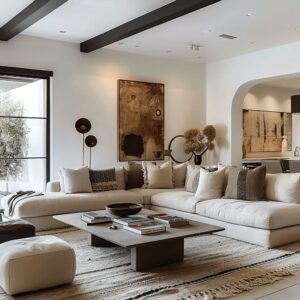In recent years, a noticeable shift has occurred in interior design preferences. The cool greys that once dominated modern homes are giving way to a warmer, more inviting palette of earthy neutrals.
This change reflects a broader movement towards creating spaces that foster comfort, connection to nature, and a welcoming atmosphere. The appeal of these tones lies in their ability to evoke a sense of tranquility and stability, which is increasingly sought after in today’s fast-paced world.
This article will explore why earthy and warm neutrals are becoming the new favorites, examining their impact on various aspects of interior design, from color palettes to architectural features.
The Appeal of Earthy and Warm Neutrals
Historically, cool greys were seen as the pinnacle of modern sophistication. They offered a sleek, minimalist look that appealed to those seeking a clean and uncluttered aesthetic.
However, as lifestyles evolved and more time was spent at home, the need for spaces that felt cozy and nurturing grew significantly. Earthy and warm neutrals meet this need perfectly, offering an alternative that feels both grounded and inviting.
These colors are deeply associated with nature, invoking feelings of stability, warmth, and comfort.
The psychological impact of these tones is profound. Warm neutrals such as beige, taupe, terracotta, and various shades of brown provide a backdrop that is both calming and rich in depth.
These colors evoke the natural world, bringing an element of the outdoors inside. This connection to nature is particularly important in urban settings, where access to green spaces might be limited.
By incorporating these hues into interior design, homeowners can create a sanctuary that promotes relaxation and well-being, making their living spaces more enjoyable and conducive to a balanced lifestyle.
Key Elements of Earthy and Warm Neutral Interiors
Color Palette
The foundation of any successful earthy and warm neutral interior lies in the careful selection of colors. Unlike the starkness of cool greys, these palettes are rich and varied, allowing for a nuanced approach to design.
Popular choices include soft beiges, muted taupes, deep terracottas, and a range of browns from light caramel to dark chocolate. These colors can be used alone or in combination to create a layered, sophisticated look that feels both cohesive and dynamic.
In living rooms, these tones can be introduced through wall colors, upholstery, and accessories. For instance, a deep taupe wall paired with a beige sofa and brown accents creates a harmonious and inviting space.
In kitchens, warm wood tones and stone countertops complement each other beautifully, providing both visual interest and practicality. Bedrooms benefit from the soothing quality of these colors, creating restful environments that encourage a good night’s sleep.
By selecting a balanced mix of these hues, designers can create spaces that feel both modern and timeless.
Integrating Earthy and Warm Neutrals in Different Spaces
Living Rooms
Living rooms are the heart of the home, and incorporating earthy tones here sets the stage for the entire house. Consider a living room with a large, plush sofa upholstered in a creamy beige fabric.
This central piece can be complemented with throw pillows in various shades of brown and terracotta, adding depth and warmth. Soft, neutral fabrics for curtains and rugs enhance the room’s coziness without overwhelming the senses.
Natural light plays a crucial role in these spaces. High ceilings and large windows allow sunlight to flood the room, enhancing the warmth of the earthy tones.
Furniture with clean lines ensures that the space remains modern and uncluttered, while textures such as wool, linen, and natural fibers add interest and comfort. The use of varied textures is key to creating a layered look that is rich and inviting, rather than flat and monotonous.
Kitchens and Dining Areas
In kitchens and dining areas, the integration of warm neutrals can create inviting spaces that encourage gathering and conversation. Sleek cabinetry in rich wood tones, combined with stone countertops, provides a timeless look that is both functional and beautiful.
Minimalistic designs with open layouts ensure that these spaces feel airy and light, enhancing their appeal and usability.
Dining areas benefit from plush chairs upholstered in soft fabrics that complement the kitchen’s color scheme. A long dining table with a polished stone top becomes the centerpiece, surrounded by chairs in neutral hues.
Pendant lighting above the table not only provides necessary illumination but also adds a touch of sophistication. These lighting fixtures, combined with the natural warmth of the materials, create a dining space that feels both luxurious and comfortable, perfect for family meals and entertaining guests.
As you consider updating your home’s interior design from cool greys to inviting earthy and warm neutrals, understanding the potential costs involved is essential. To assist you in this process, we recommend using our Home Renovation and Remodel Cost Calculator
Architectural Features and Design Elements
Architectural Integration
The architectural elements of a home play a significant role in enhancing the appeal of earthy and warm neutrals. High ceilings create a sense of openness, while large windows maximize natural light, highlighting the warmth of the chosen color palette.
Open-plan layouts allow for seamless transitions between different areas, creating a cohesive flow throughout the home.
A sleek staircase with a glass railing and black metal accents can serve as a key feature, adding a modern touch to the earthy tones. This combination of materials keeps the design contemporary while ensuring that the natural elements remain at the forefront.
The integration of these architectural features with the overall design scheme helps to create a harmonious and unified space that feels both expansive and intimate.
Textures and Materials
Textures and materials are essential in bringing an earthy neutral palette to life. Natural materials such as wood, stone, and metal provide the foundation for these designs.
The contrast between soft fabrics and hard surfaces adds depth and interest. For example, a coffee table with a marble top and a ribbed base introduces a tactile element that draws the eye and enhances the visual appeal of the space.
Side tables in metallic finishes, like brushed gold or black metal, complement the overall aesthetic. These materials not only look appealing but also add a sense of solidity and permanence to the space.
Incorporating a mix of textures, from smooth leathers to rough textiles, ensures that the room feels dynamic and engaging. This approach to material selection helps to create a space that is visually interesting and texturally rich, adding layers of complexity to the design.
Furniture and Decorative Accents
Key Furniture Pieces
Choosing the right furniture is crucial for achieving a warm neutral interior. Essential pieces include plush sofas, modern armchairs, and well-crafted coffee tables.
For example, a sofa in a neutral beige fabric can be the centerpiece of the living room, surrounded by accent chairs in coordinating tones. The furniture should be comfortable yet stylish, blending seamlessly with the room’s overall design.
The use of high-quality, durable materials ensures that these pieces not only look good but also stand the test of time.
Decorative Accents
Decorative accents add the finishing touches to an earthy neutral interior. Vases, sculptures, and books can personalize the space and reflect the homeowner’s interests.
Organic elements, such as dried botanical arrangements, bring a touch of nature indoors. For instance, a ceramic vase filled with dried flowers on a coffee table adds both height and interest to the room.
These small touches help to create a space that feels lived-in and personalized, adding character and warmth.
Lighting and Ambiance
Lighting Design
Proper lighting is essential for creating the right ambiance. Recessed ceiling lights provide even, unobtrusive illumination, ensuring the space is well-lit without the need for intrusive fixtures.
Modern floor lamps with sleek bases and soft fabric shades offer additional lighting while contributing to the room’s overall aesthetic. The choice of lighting fixtures plays a crucial role in setting the mood and enhancing the overall design of the space.
Natural Light
Maximizing natural light is another key aspect. Large windows with sheer curtains allow light to filter through, creating a warm and welcoming atmosphere.
The connection between indoor and outdoor spaces is emphasized, enhancing the room’s airy feel and bringing the beauty of the outside world into the home. The strategic placement of windows and the use of light-colored fabrics help to make the most of natural light, creating a bright and cheerful interior.
Rugs and Flooring
Flooring Choices
Flooring is a fundamental component of any design. Light, natural wood flooring complements the earthy neutral palette, adding to the room’s airy and open feel.
For added comfort, area rugs in soft, neutral tones with subtle patterns can be used. These rugs not only enhance the room’s aesthetic but also provide a plush surface underfoot, making the space feel more inviting.
The careful selection of flooring materials and patterns can significantly impact the overall look and feel of the space.
The Role of Art in Earthy Neutral Spaces
Art Selection
Art plays a significant role in adding color and visual interest to a space. Abstract art pieces in earthy tones can serve as focal points, drawing the eye and adding sophistication.
For example, a large painting with dynamic brushstrokes in shades of beige, brown, and terracotta can create a striking contrast against neutral walls. The choice of artwork should reflect the homeowner’s personal taste and complement the overall design scheme.
The Seamless Integration of Indoor and Outdoor Spaces
Connecting Indoor and Outdoor Living
One of the standout features of modern interior design is the seamless integration of indoor and outdoor spaces. Large, floor-to-ceiling windows and sliding glass doors create a fluid transition, allowing for easy access to outdoor patios.
Furnished with comfortable seating and greenery, these outdoor areas become extensions of the living space, perfect for entertaining or relaxing. The careful design of these transition spaces helps to blur the boundaries between indoors and outdoors, creating a harmonious and cohesive living environment.
Practical Tips for Transitioning from Cool Greys to Warm Neutrals
Step-by-Step Guide
Transitioning from cool greys to warm neutrals can transform your home into a more inviting and comfortable space. The process requires careful planning and thoughtful changes.
Here’s a detailed, structured guide to help you make the shift effectively
- Assessment of Existing Space:
- Begin by thoroughly evaluating your current space. Look at the dominant colors, materials, and overall mood of each room.
Identify which elements contribute to the cool grey palette and which can potentially blend with warmer tones.
- Develop a cohesive color palette that includes various shades of beige, brown, taupe, and terracotta.
Consider using paint swatches and fabric samples to visualize how these colors will look in your space.
- Repainting walls is one of the most impactful changes you can make.
Choose a warm neutral color that complements your new palette. Neutral shades of beige or taupe can replace cool greys to create a more inviting backdrop.
Matte finishes can give a softer look, while eggshell or satin finishes add a bit of sheen and are easier to clean.
- Replace cool grey textiles such as curtains, throw pillows, and rugs with those in warmer tones. Opt for fabrics in rich, earthy colors and varied textures to add warmth and coziness.
- Introduce throws and cushions in shades of brown, terracotta, or cream.
Mix and match textures like wool, linen, and velvet to enhance the tactile quality of the space.
- Natural materials like wood, stone, and woven fibers can significantly warm up a room. Consider adding wooden furniture pieces or accents.
Light or medium-toned woods, such as oak or walnut, work well with warm neutral palettes.
- If your budget allows, replace large furniture pieces that are predominantly cool grey with items in warm neutrals. A beige or brown sofa can become the new focal point of your living room.
- Consider reupholstering existing furniture in warmer tones if buying new pieces isn’t feasible.
This can be a cost-effective way to transition to a new color scheme.
- Small changes can have a big impact. Introduce accessories in warm colors, such as decorative bowls, vases, and artwork.
These can be strategically placed around the room to add pops of warmth.
- Layer different textures to create a rich, inviting environment.
Combine soft textiles with hard surfaces, such as a wool throw over a leather chair or a linen cushion on a wooden bench.
- Finally, add personal touches that reflect your style while adhering to the warm neutral theme. This could include family photos in wooden frames, handmade ceramics, or plants in terracotta pots.
- Incorporating greenery not only adds a natural element but also complements the earthy tones, making the space feel more lively and vibrant.
Conclusion
Earthy and warm neutrals offer a timeless appeal that cool greys simply cannot match. These colors create environments that are both stylish and comforting, making them perfect for today’s homes.
By incorporating natural materials, thoughtful lighting, and personal touches, homeowners can transform their spaces into inviting sanctuaries. As we move away from the starkness of cool greys, the rich, warm tones of earthy neutrals provide the perfect backdrop for a cozy and elegant home.
This trend reflects a broader desire for spaces that feel nurturing and connected to the natural world, offering a refuge from the hustle and bustle of daily life.


